
When someone says something like an asylum is actually a human rat-trap, easy to get it and almost impossible to get out, it makes you wonder.
Insane asylums, known today as mental hospitals, were big institutions that housed people who were diagnosed or labeled as insane in order to treat and cure them from their illness. Patients went through different therapies (if you can call it this way), but not all were successful, having the knowledge in the past purer than it is today.
Shock therapy, brain surgery to remove parts of the brain and modify the patients’ behavior, or being locked in rooms and cages are only some of the experiences patients at insane asylum had to go through and suffer.
Some mental asylums are said to be haunted by the ghosts of patients who lost their lives there, others are abandoned and creepy in the landscape, keeping secrets and horror stories of the lost past and some were demolished and no longer there, but their stories stay forever.
So, without further ado, here are real and horrific experiences that asylum patients had to go through and suffered from.
Topeka State Hospital (Topeka, Kansas, USA)
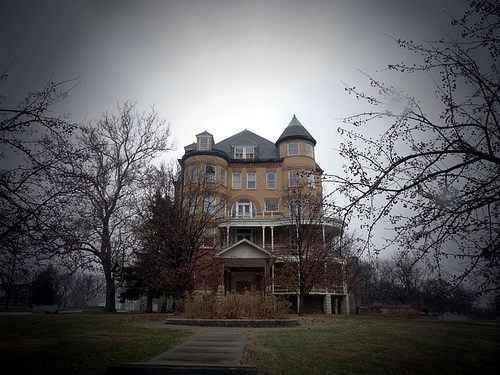
We mentioned that the purpose of mental asylums was to treat and try to cure or ease the pain of its patients, but when it comes to Topeka State Hospital, things were different. The patients there were frequently subjected to cruelties that believe it or not, were intended to actually cure them of their illnesses.
I’m not sure how such acts can help anyone, let alone a mental patient, but patients at the asylum were reportedly abused and raped, and one newspaper reporter even told of seeing a patient who had been confined in leather straps so long, that the patient’s skin was growing around the straps!
In 1931, the state permitted the asylum to start and castrate patients who were categorized as habitual criminals, imbeciles, idiots, epileptics, and insane. Overall, 54 castrations took place in the asylum, until its closure in 1997, with most of the asylum’s buildings having been demolished.
The Trans-Allegheny Lunatic Asylum (Weston, West Virginia, USA)
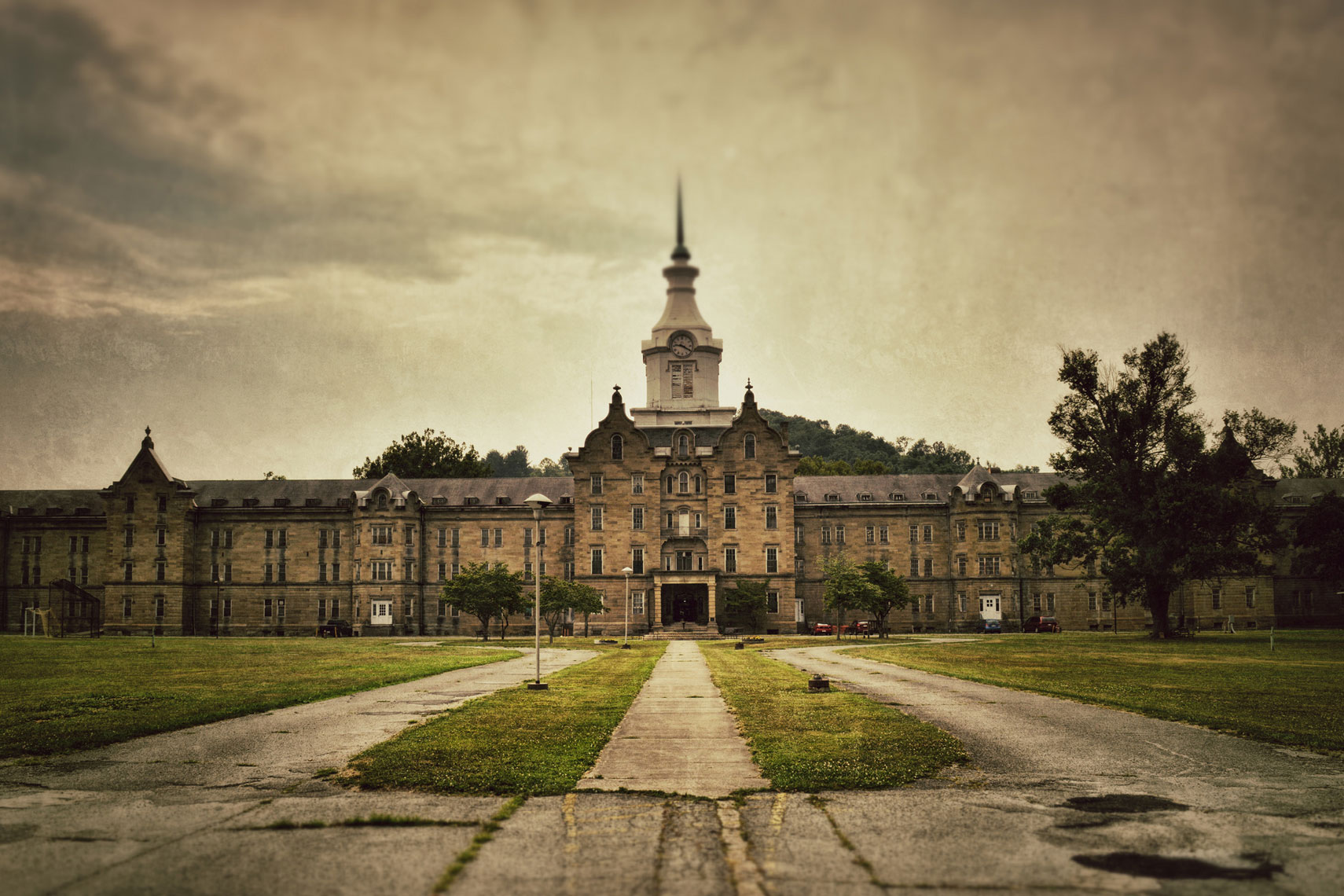
Initial planning of the Trans-Allegheny Lunatic Asylum was to house only 250 patients, but by 1949, the mental asylum population grew to no less than 2,400 patients.
Some of the horrors and horrible experiences that patients at the Trans-Allegheny Lunatic Asylum had to go through was to be locked in cages, but that was the least of their worries, as lobotomies were also being performed in the asylum, and they were done using ice picks. On top of that, hundreds of patients were simply neglected, not treated nor taken care of.
The mental asylum closed its gates in 1994, and is now considered to be a haunted asylum. Paranormal seekers can even stay in the facility overnight, if they dare…
Greystone Park Psychiatric Hospital (Morris Plains, New Jersey, USA)
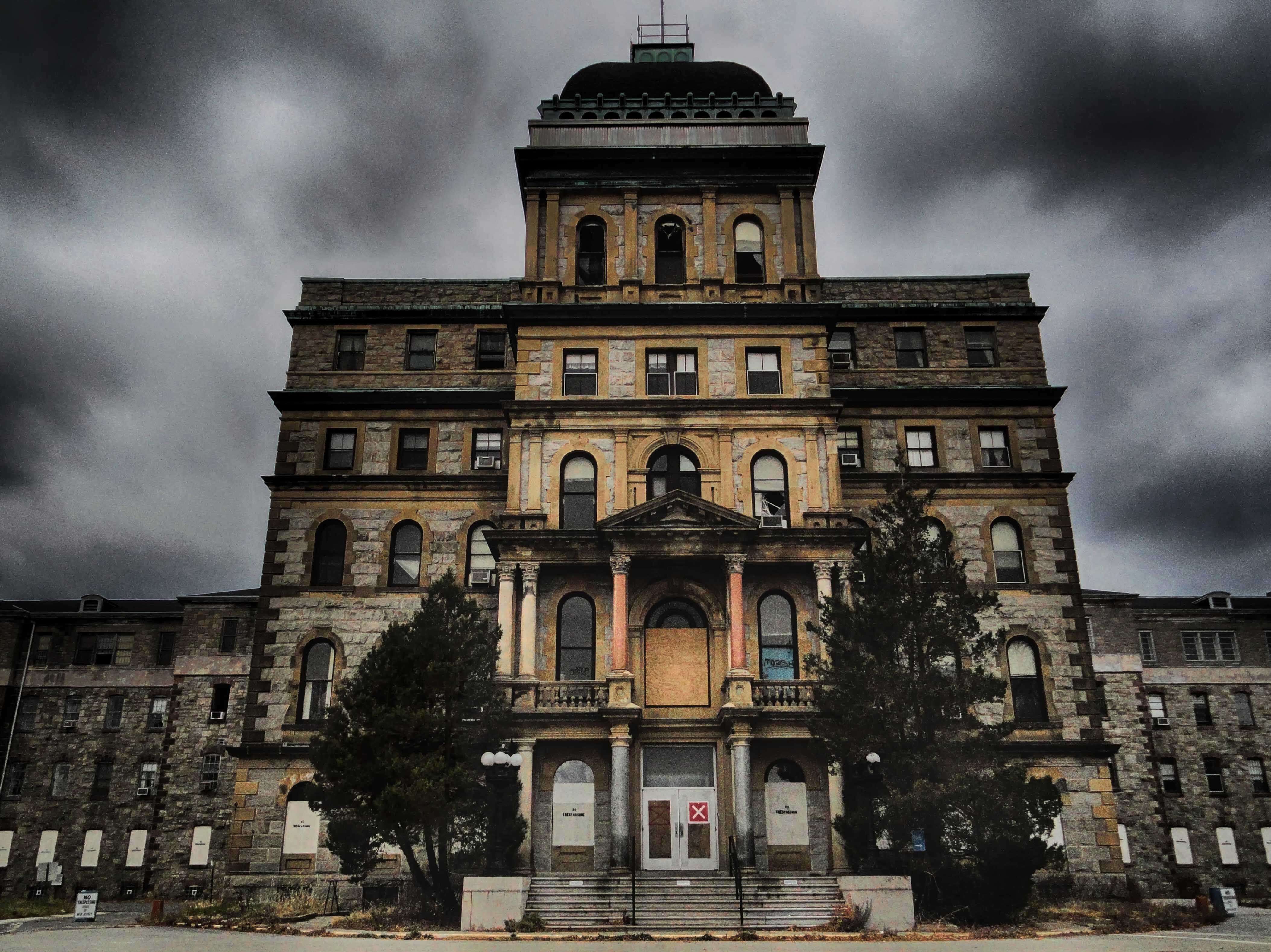
Greystone Park Psychiatric Hospital in New Jersey opened in 1876 and the goal of this asylum was to provide a sanctuary for the mentally ill. however, in reality, this was not the case.
2,412 patients were squeezed into a space that was meant to house only 1,600 people, and they regularly administered insulin shock therapy and electroconvulsive therapy to patients who suffered from PTSD.
The hospital eventually shut down in 2003 due to concerns about the aging buildings, and of course for the negative press that the asylum had received.
Willowbrook State School (Staten Island, New York, USA)
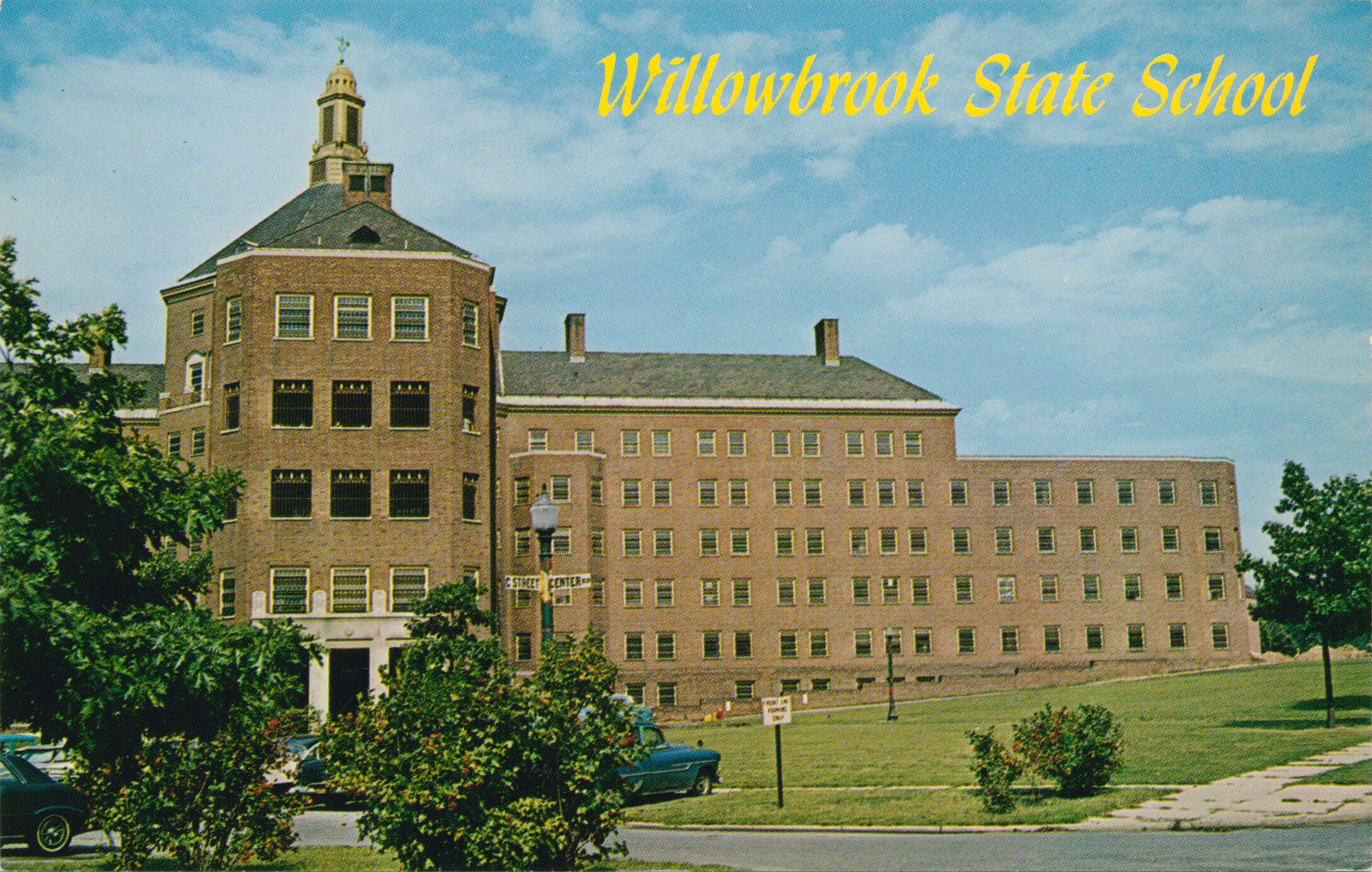
Willowbrook State School in Staten Island operated under terrible conditions. During the 1960s when Robert Kennedy took a tour inside the facility, he was appalled by the ‘zoo-like’ conditions of the place.
Geraldo Rivera also investigated the asylum, and discovered that its patients were left to wander around the institute while being covered in their own feces and urine, and some patients were even the subject of sexual assault by the staff.
Some even claim that Willowbrook State have housed at one time the famous criminal Cropsey, who was known for killing children and burying them near the Willowbrook grounds.
An interesting fact about this asylum, is that it was also partly the inspiration for American Horror Story: Asylum.
The Whittingham Hospital (Whittingham, Lancashire, England)
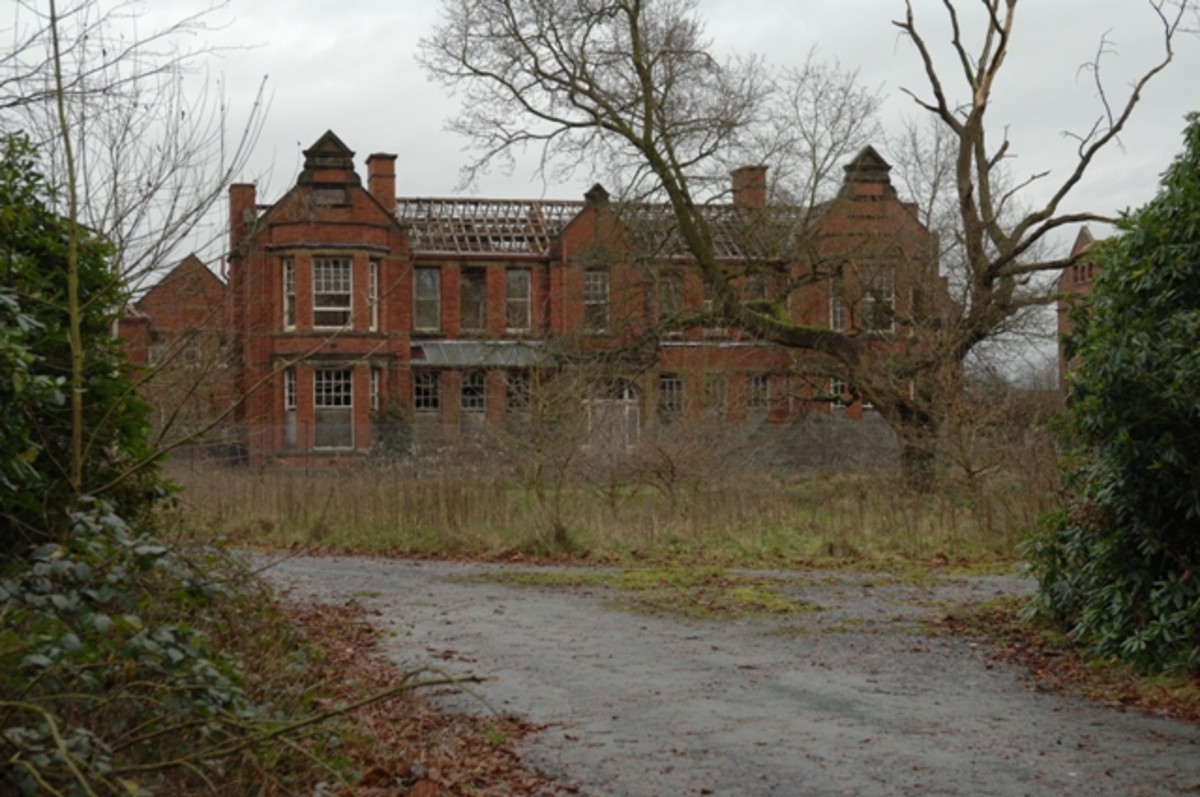
The Whittingham Hospital in London was once the largest mental hospital in Britain, pioneering the use of electroencephalograms (EEG).
In 1965, stories started emerging about patients in the hospital being locked in the courtyard during freezing weather, put to bed wearing only vests, and even refused to enter to the bathrooms.
The hospital closed in 1995, but most of its buildings are still standing, a sad memory of the history and horror stories of the place.
The Walter E. Fernald State School (Waltham, Massachusetts, USA)
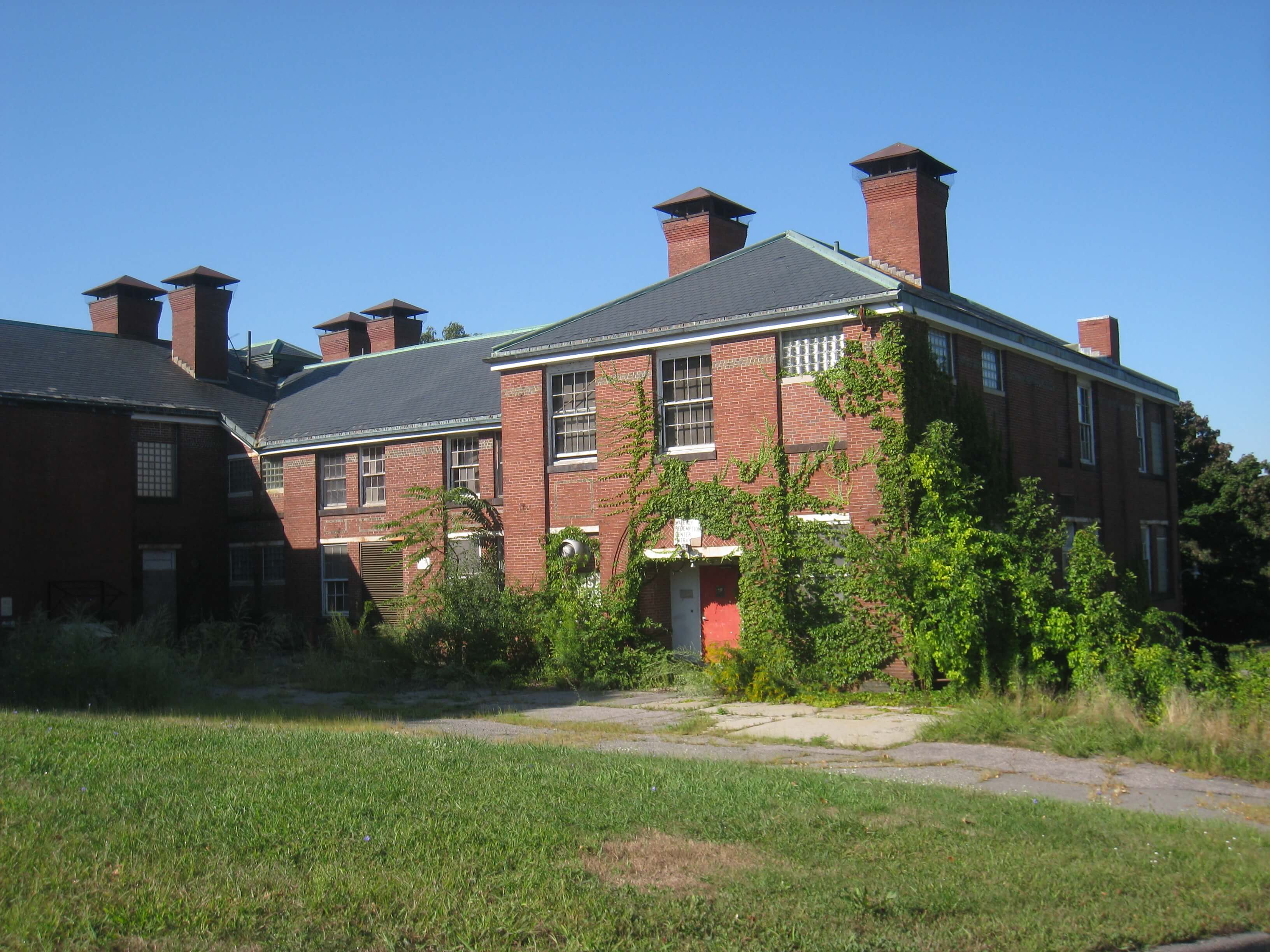
The Walter E. Fernald State School was originally described as “a school for idiotic children,” but in reality it simply served as a prison for the mentally ill.
Many mental asylums during that time were referred to as schools, despite being nothing of the sort. Abuse of the sexual and physical kind were very much common at the asylum, and MIT researches even experimented on the children, as they werelacing their food with radioactive materials in order to see how their bodies would absorb ions.
In 1998, MIT agreed to pay a compensation amount of $2 million to the survivors of the institute.
Eastern State Hospital (colonial Williamsburg, Virginia, USA)
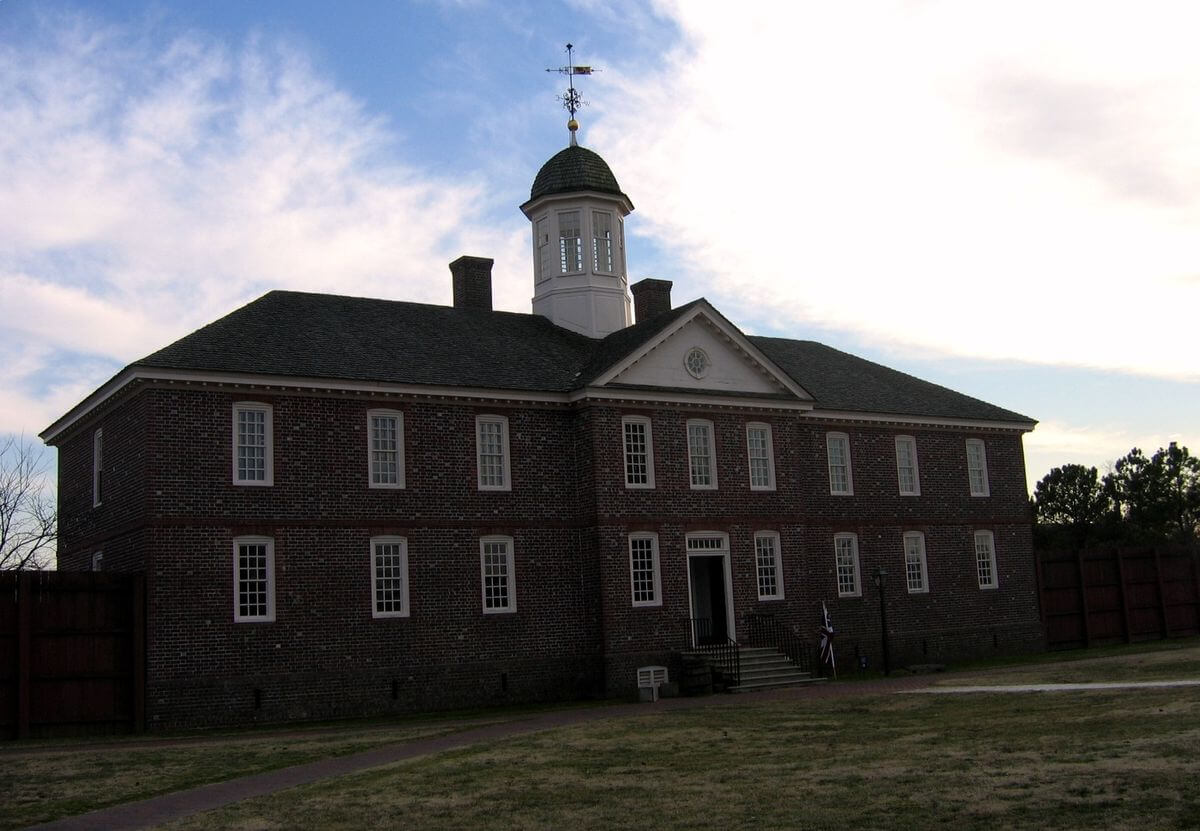
Williamsburg Virginia was home to the first American hospital constructed exclusively for the mentally ill, Eastern State Hospital.
The asylum ran like a prison and was even partly run by slaves. Patients at the hospital were constrained by strait-jackets and subjected to physical abuse.
Today, the place operates as a museum.
Overbrook Insane Asylum (Cedar Grove, New Jersey, USA)
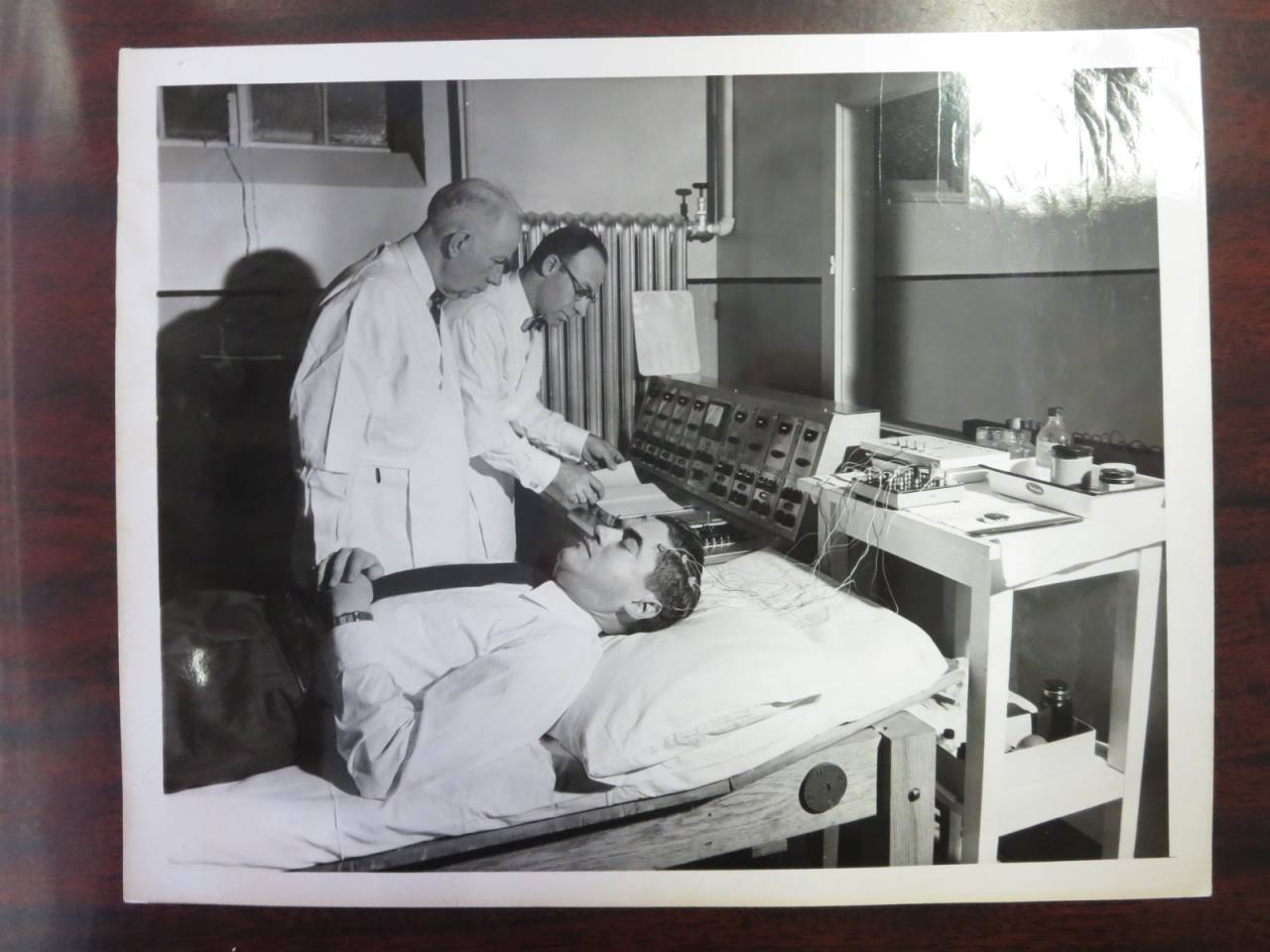
Overbrook Insane Asylum in Cedar Grove, New Jersey opened its gates in 1896 and was operational until 1975.
The asylum was supposed to be part of a self-contained treatment center for the mentally ill, and it was chosen for its tranquil setting. However, the patients there were subject to neglect, including one incident where patients were left to freeze to death in their own beds.
The film version of Chuck Palahniuk’s Choke used this asylum as a set.
Broadmoor Hospital (Crowthorne, Berkshire, England)
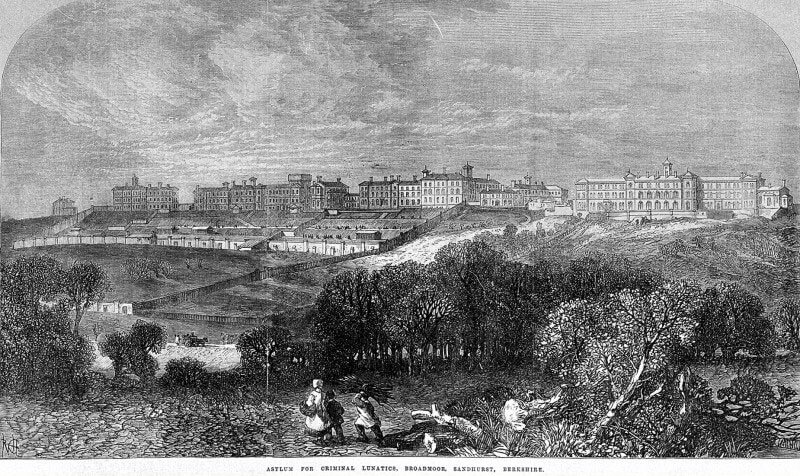
Broadmoor Hospital in London was founded in 1863, and its official name was “Broadmoor Criminal Lunatic Asylum.”
Among the first inmates there were two would-be assassins of Queen Victoria, along with many women who were accused of murdering their own children while suffering post-natal depression.
Over the years, the asylum became known for its famous patients, which included the likes of Charles Bronson. Today, the facility houses 200 of the most dangerous criminals in Europe, and is known to be one of the most secured hospital in the UK.
The Magdalene Asylum (Whitechapel, England)
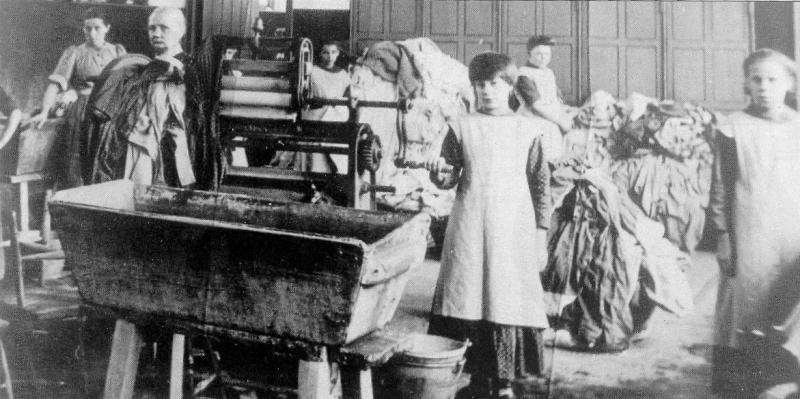
The Magdalene Asylum (aka the Magdalene Laundries), were Catholic-Church run institutions established for the so-called Ireland’s “fallen women” in the 18th century.
Over its course of 150-year history, no less than 30,000 women entered the asylum in order to be institutionalized for reasons ranging from being prostitutes, up to having a child out of wedlock.
These women suffered sexual, psychological and physical abuse, all the while being cut off from the outside world.
The Magdalen Laundry which is located in Cork, Ireland closed its gates in 1996 after a mass grave was discovered near the hospital.
Christian Church Hospital (Kansas, USA)

In 1927, Dr. Robert Patterson decided to purchase the Christian Church Hospital in Kansas, and start operating it as a mental facility.
For 30 years, Dr. Patterson used various treatments like wet sheets, chains, beatings, cages, and the ice pick lobotomy method on the patients in the facility.
In 1957, Dr. Patterson suddenly went insane himself, and when all attempts to cure him failed, he became a victim of his own method – the notorious ice pick lobotomy.
Some even say that the ghost of Dr. Patterson can still be seen in the window of the staff offices at night.
Byberry Mental Hospital (Byberry Road, Pennsylvania, USA)
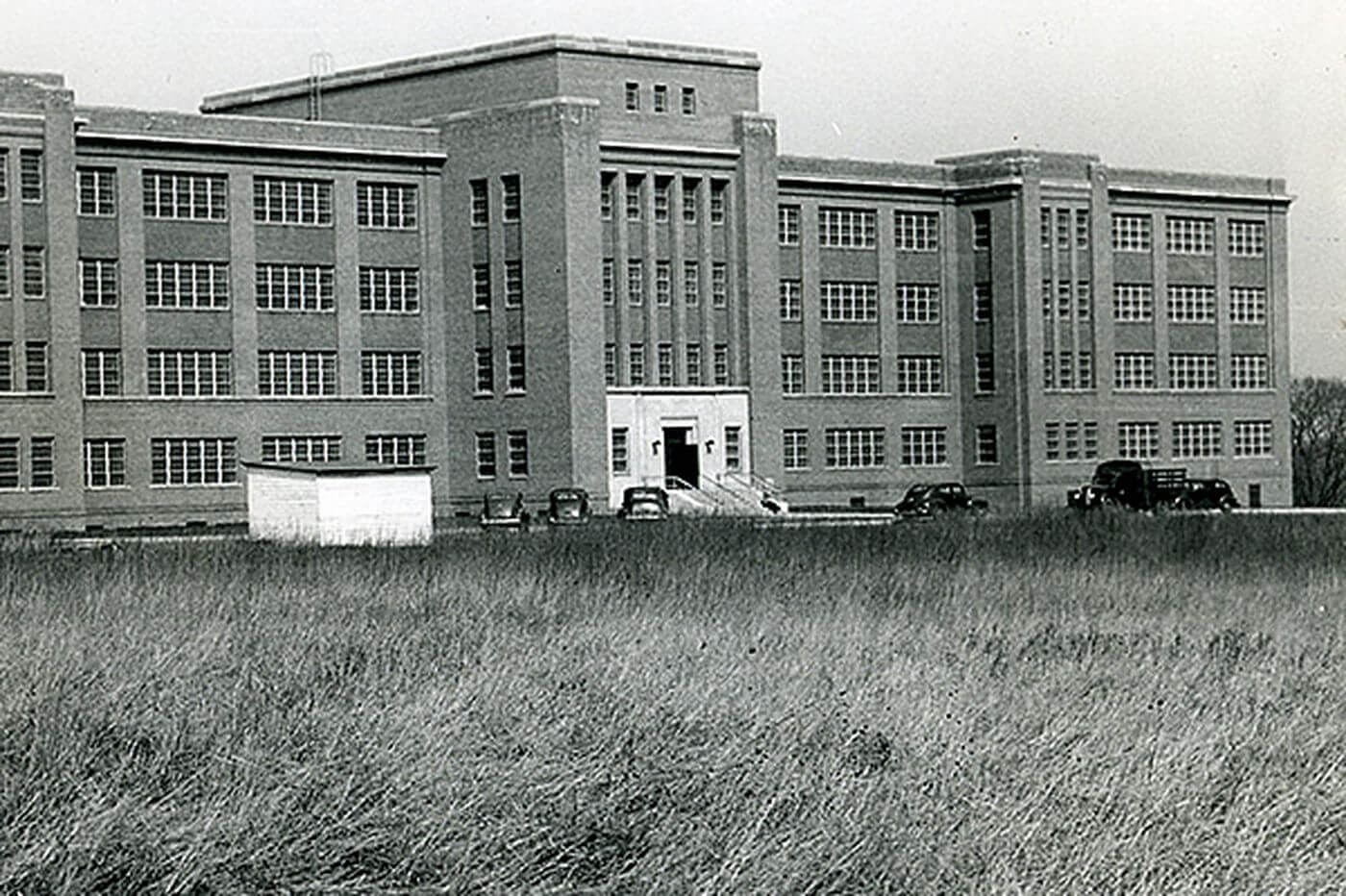
Byberry Mental Hospital locate in Pennsylvania began operating in 1907, and was hidden from public awareness for several years.
Compared to Nazi Concentration camps during the 1940s, the hospital was filthy and overcrowded, with patients sleeping in their own urine and feces, and many other roaming the halls of the asylum completely naked.
Photographs that were published in a 1946 issue of Life magazine revealed the whole truth, and that sparked a widespread reform.
In 1989, the asylum was permanently closed, with reasons to this closure of “atrocious” and “irreversable” conditions at the institute.
Bartonville Insane Asylum (Bartonville, Illinois, USA)

in 1885, Construction on the Bartonville Insane Asylum began, and in two years later, in 1887 it was completed.
Beautiful and creepy as it is, the original hospital looked as if it was a medieval castle, but was never used, and eventually was torn down in 1897 for reasons of “structural and design flaws.”
In 1902, the institute reopened with Dr. George A. Zeller running it, employing a cottage system of 33 buildings that housed all patients. This new hospital design had no window bars or restraints, so things went smooth, safe and sane in this hospital.
It was in operation until 1972, but after it closed its gates, the buildings of the institute remained unused and therefore were sold off.
Today, most of the structures have been converted into office space.
The North Wales Hospital (Denbigh, Denbighshire, Wales)
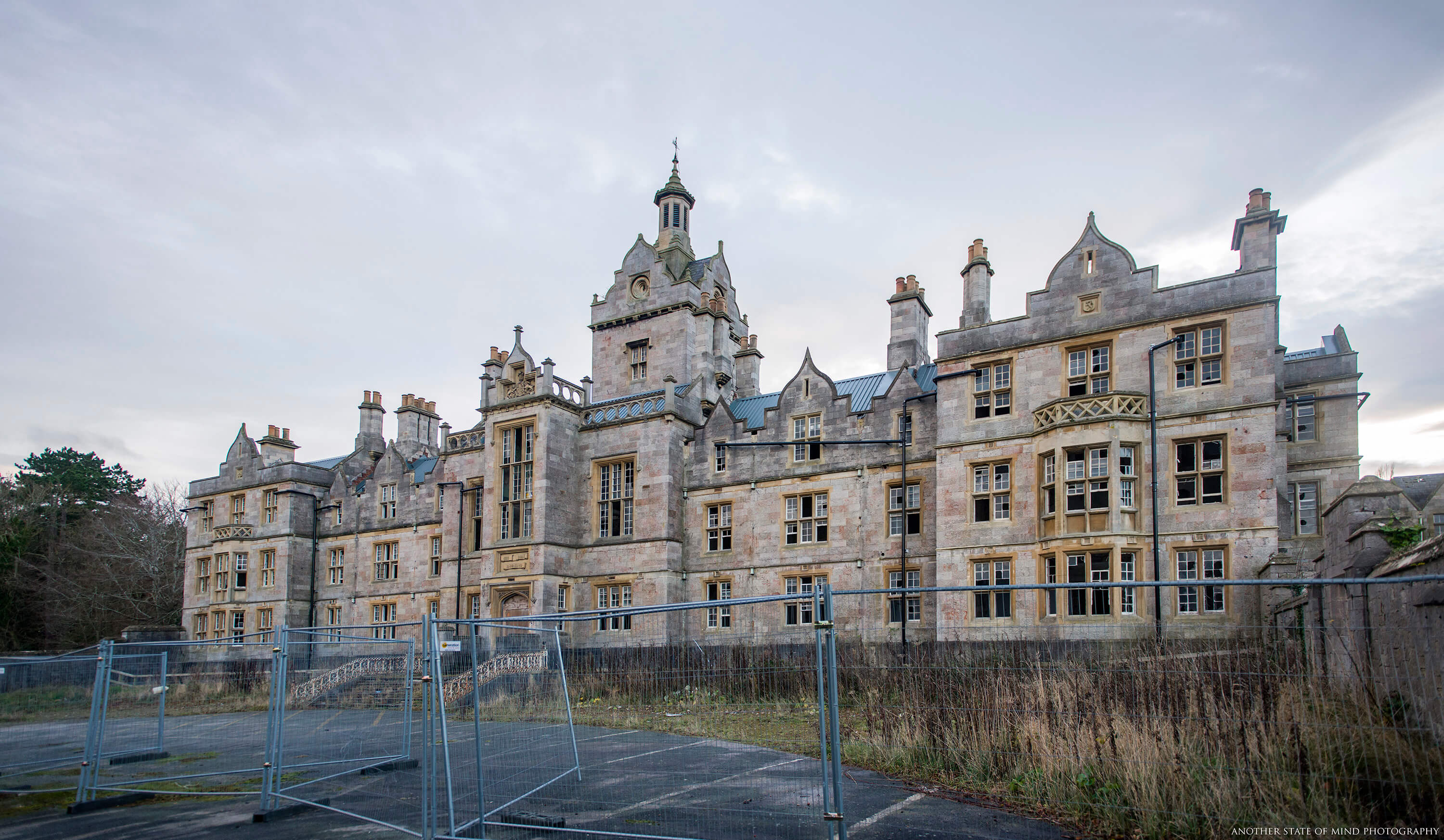
The North Wales Hospital is also known as the Denbigh Mental Asylum. It was constructed between the years 1844-1848, and operated as a refuge for Welsh-speaking mental patients.
By 1899, this hospital housed no less than 1,500 patients, which was well above its original capacity of 200 patients only.
In 1995, The hospital closed for good, and had since suffered from vandalism over and over again.
It is said that this hospital is haunted, and has also been featured on the British TV show Most Haunted.
Mayday Hills Lunatic Asylum (Beechworth, Victoria, Australia)
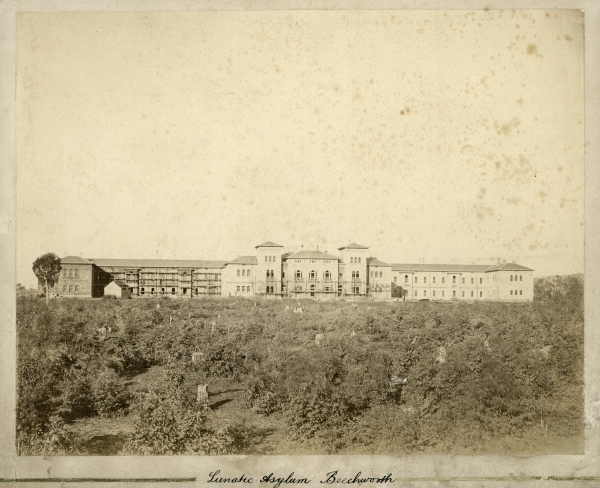
The patients of the Mayday Hills Lunatic Asylum located in Australia saw 128 years of terror before it was finally closed in 1995.
Only a few people ever left this asylum alive, and approximately 9,000 people were said to have died inside the institute.
It is said that to this day, you can still see faces floating in the windows, along with the Matron doing her rounds, and also hear the sound of children laughing.
The grounds are now the site of LaTrobe University’s Beechworth Campus, but know that if interested, nightly ghost tours are also available.
Gonjiam Psychiatric Hospital (Gwangju, Gyeonggi, South Korea)
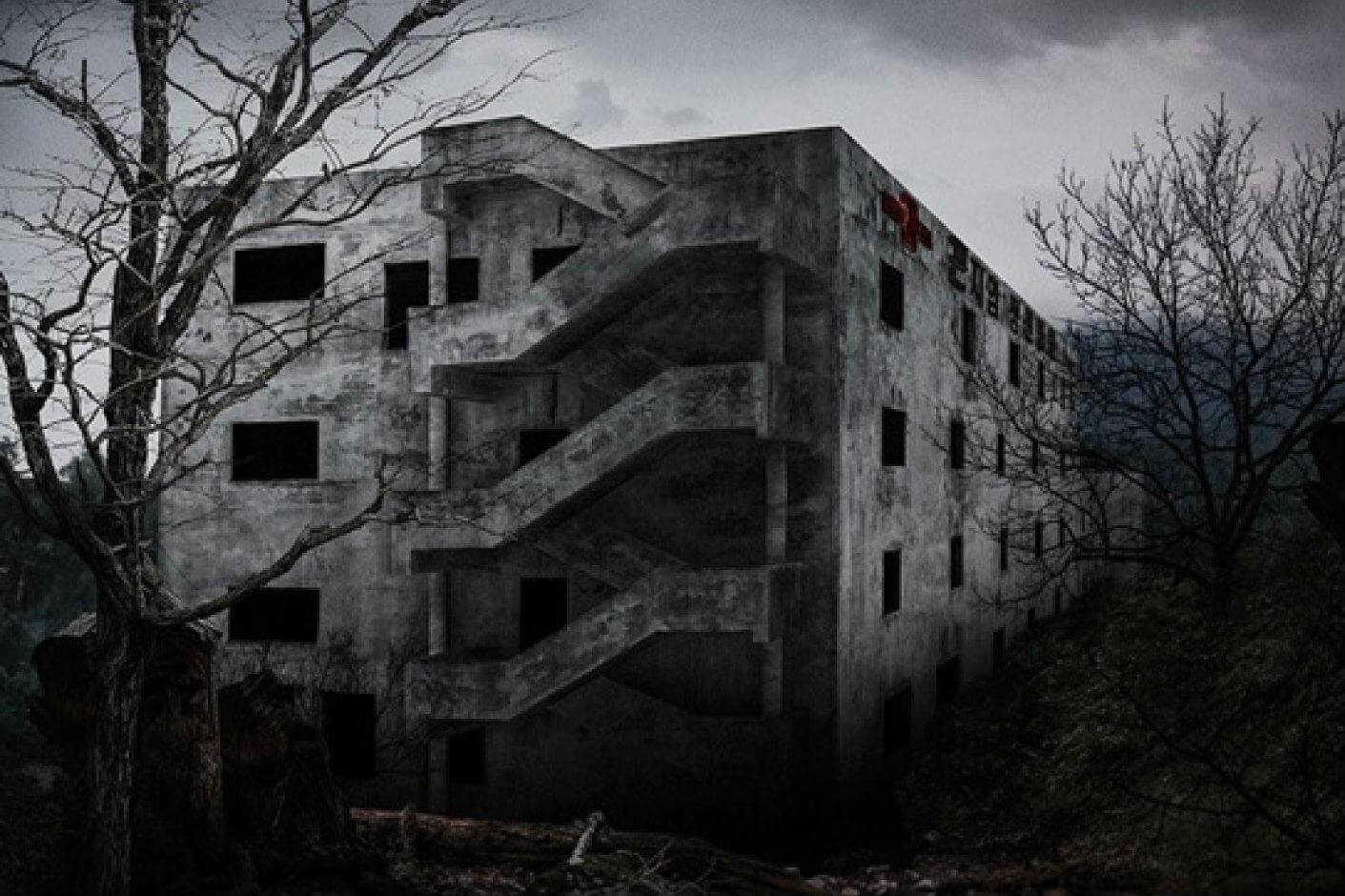
The Gonjiam Psychiatric Hospital located in South Korea has been known as one of the freakiest and scariest places in the world, according to CNN.
According to local legends, the patients in the hospital began dying under mysterious circumstances one after another, and that forced the facility to shut down.
There is a belief that the owner of the place was to blame for these deaths, murdering the patients, while others believe that the doctors themselves went insane.
In reality (or so they tell us), a sewage problem was the cause to the closure of the facility, but many believe that the hospital is still haunted.
Pennhurst Asylum (Spring City, Pennsylvania, USA)
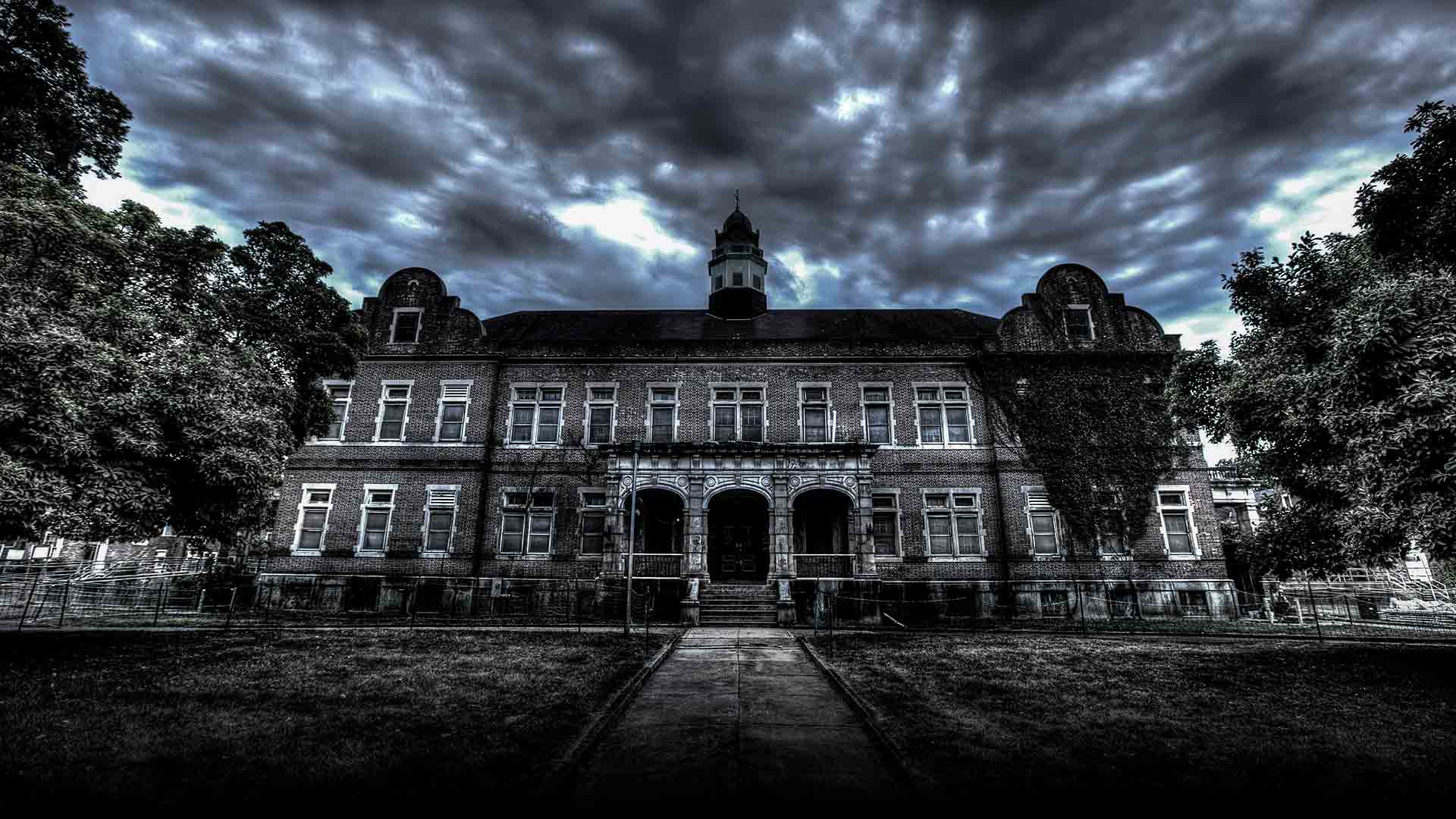
When Pennhurst Asylum was built in 1908, its intention was to educate and care for the mentally disabled. However, a television exposé called “Suffer the Little Children” from 1968 showed a whole different story.
Patients in the asylum suffered from horrific conditions, that included the screams of neglected children, large scale mental and physical abuse, and a general lack of empathy towards the patients.
The TV report also showed that children who bit one another were warned at first, but if it happened again, then their teeth would have been pulled.
This report, along with the account of a former resident, led to a successful class-action lawsuit, and eventually to closure of the institution.
Metropolitan State Hospital (Waltham, Massachusetts, USA)
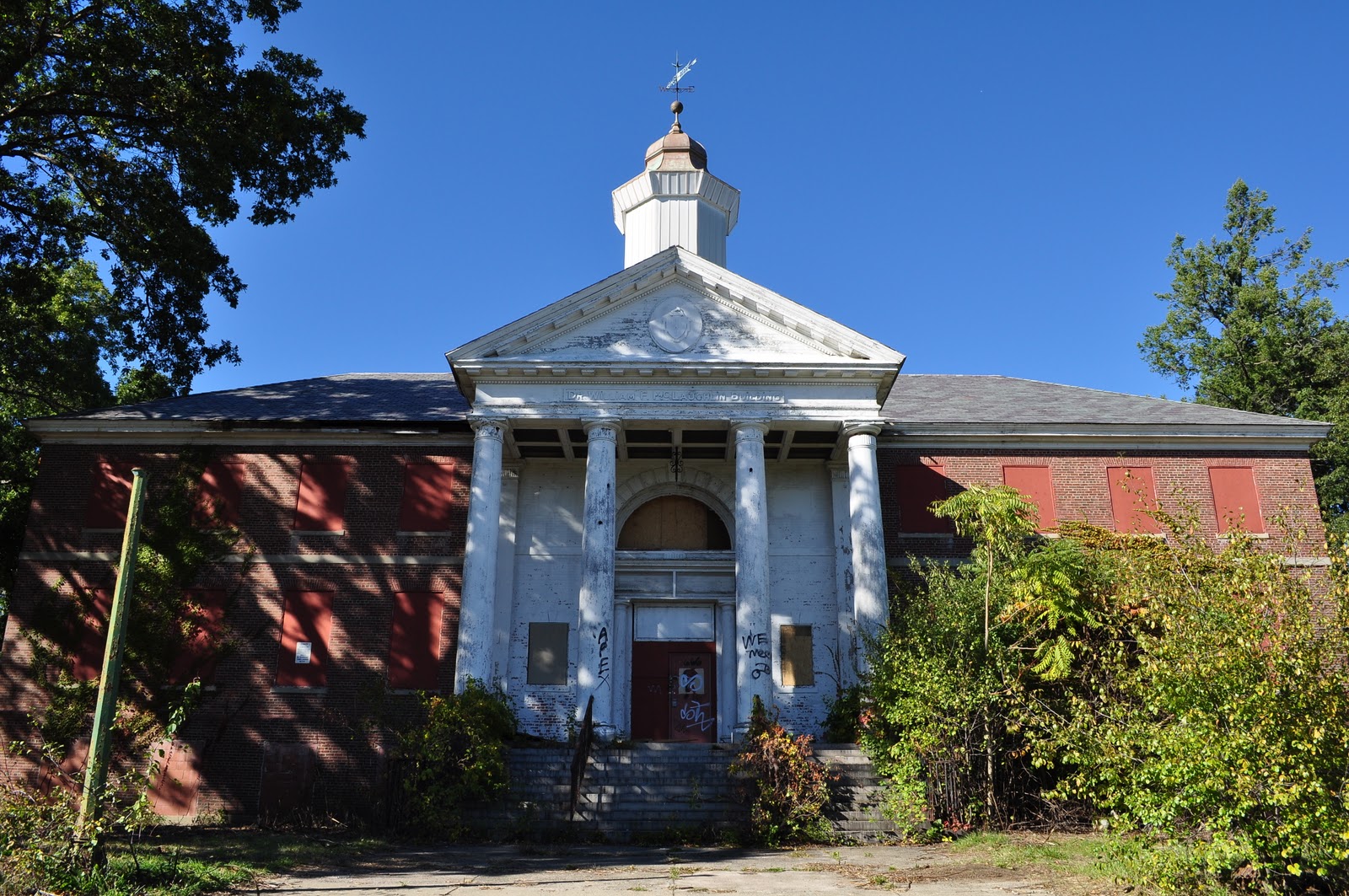
Between the 1920s and all the way until 1992, the Metropolitan State Hospital in Waltham, Massachusetts was a home for the mentally ill.
The hospital has a history of murder, mayhem and ghost sightings. In 1978, Anne Marie Davis was murdered there by a fellow patient who kept seven of her victim’s teeth as a souvenir.
By 2009, most of the original buildings of the institute had been demolished, and replaced with condo complexes. The only original building left was the hospital’s administration building.
Danvers Hospital for the Criminally Insane (Danvers, Massachusetts, USA)
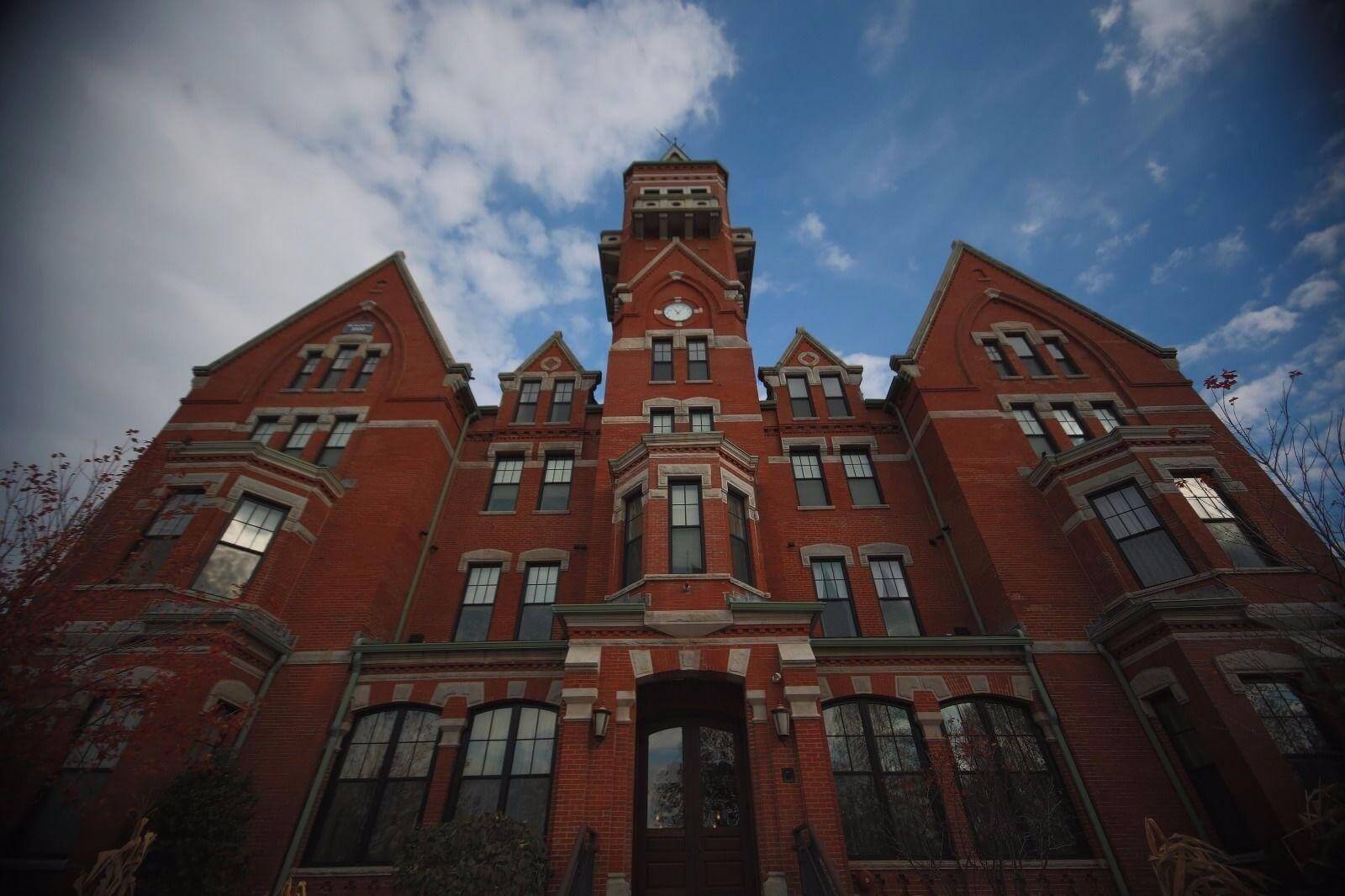
The Danvers Hospital for the Criminally Insane was the basis for some of H.P. Lovecraft’s horror stories, as well as the Arkham Asylum in Batman.
The hospital stood in the town formerly known as Salem Village, on the ground where a prominent judge in the Salem Witch Trials lived.
The treatments in the institute ranged from lobotomies to strait-jackets and all the way to shock therapy, all as means of controlling the patients when overcrowding became a problem during the 1920s and 1930s.
The state decided to close the hospital in 1992, and it is said that the site is haunted by malevolent spirits. Most of the original buildings have been demolished, and it is now an apartment complex with only the façade remaining.
Lier Asylum (Norway)
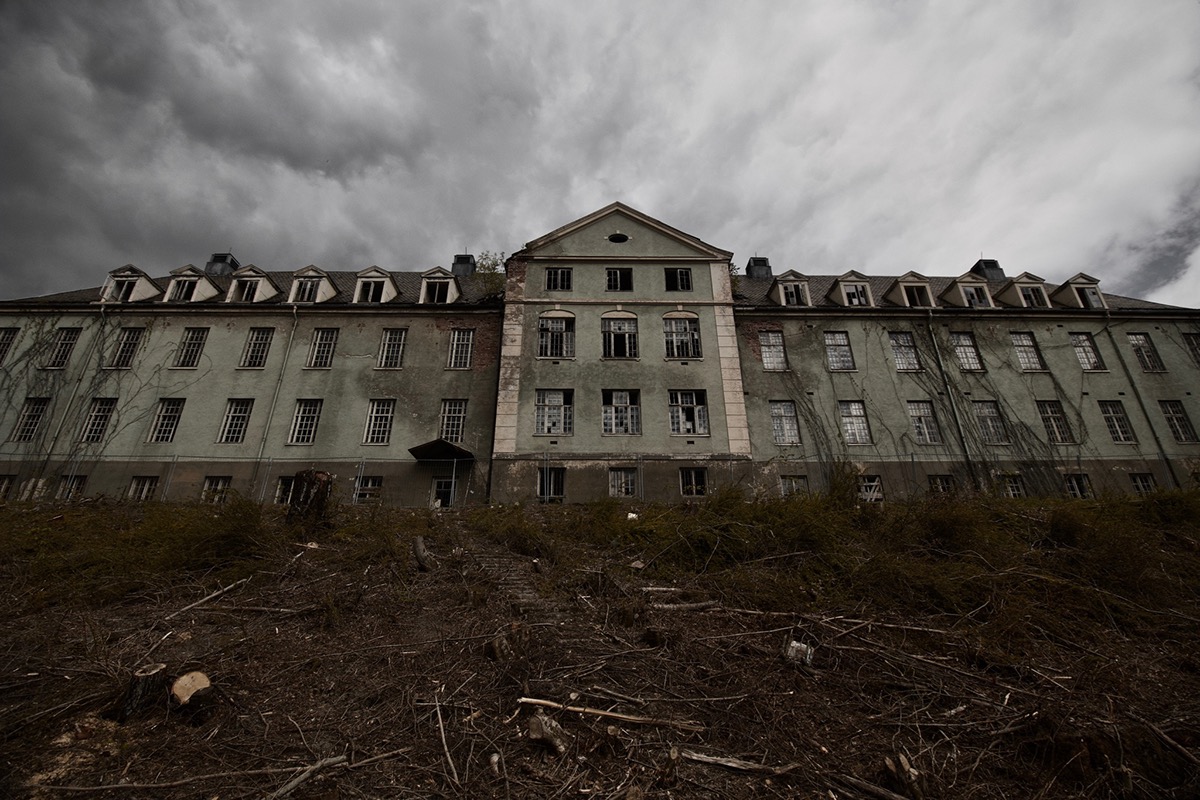
The Lier Asylum was built in 1926 and housed nearly 700 patients.
It is said to be one of the most haunted places in Norway, and it was notorious for conducting experiments on its patients, especially for testing new drugs that even the pharmaceutical industry was reluctant to try on humans.
The institution eventually closed in 1986, but beds, tables, wheel chairs and different equipment are still lying around the abandoned buildings.
The Narrenturm (Vienna, Austria)
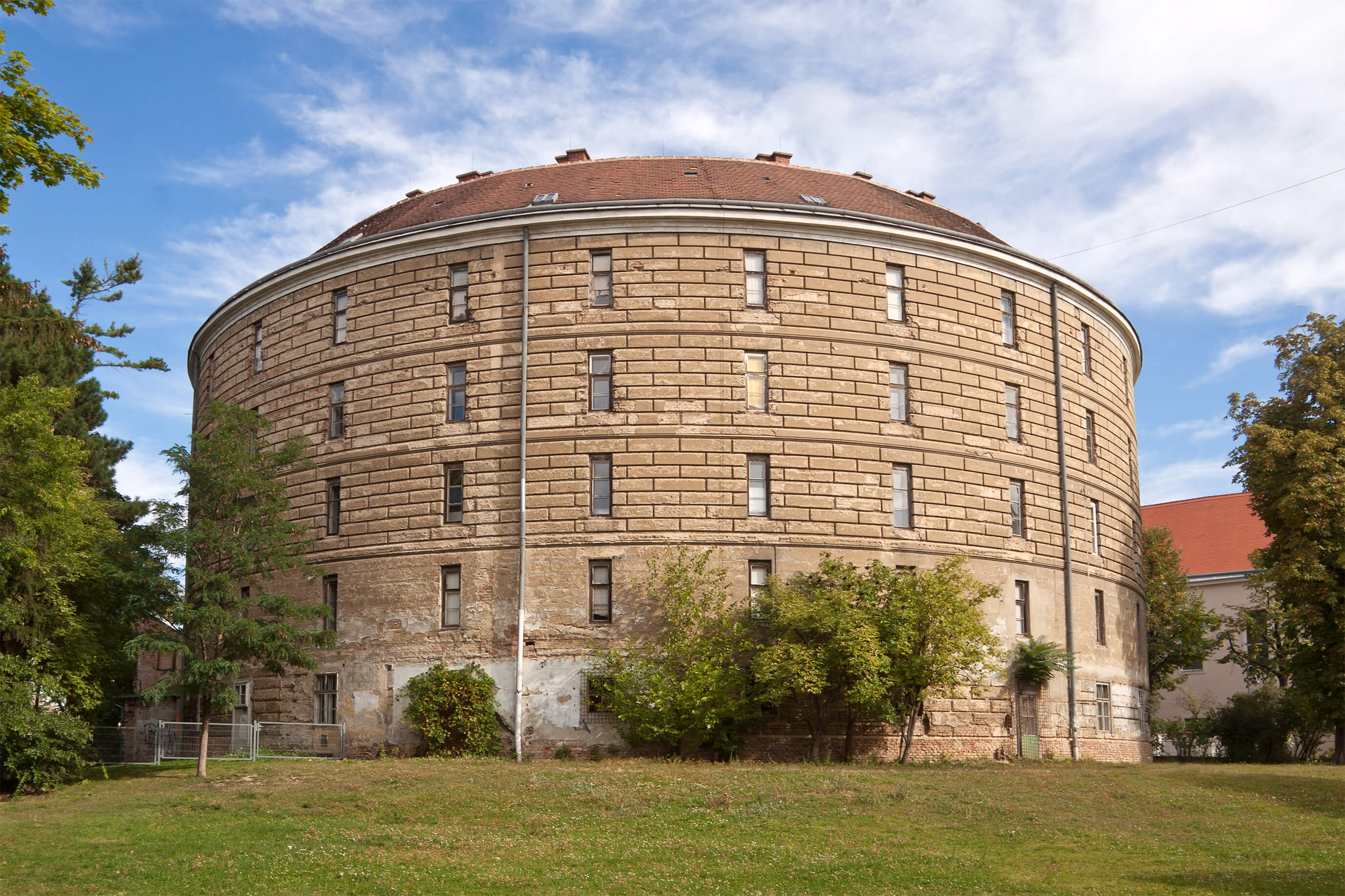
The Narrenturm (or “lunatic’s tower,”) in Vienna, Austria, was the world’s first building designed to keep the mentally ill patients locked up in a central facility.
Construction of the facility began in 1783, and the first patients were admitted in 1784. Since treatment for mental illness was non-existent at the time, the patients in The Narrenturm were simply incarcerated, two people per cell, with only one bed and bare walls.
In 1866, the place ceased to function as an asylum, and it is now a branch of the Natural History Museum of Vienna.
Saint-Julien Hospital (Quebec, Canada)
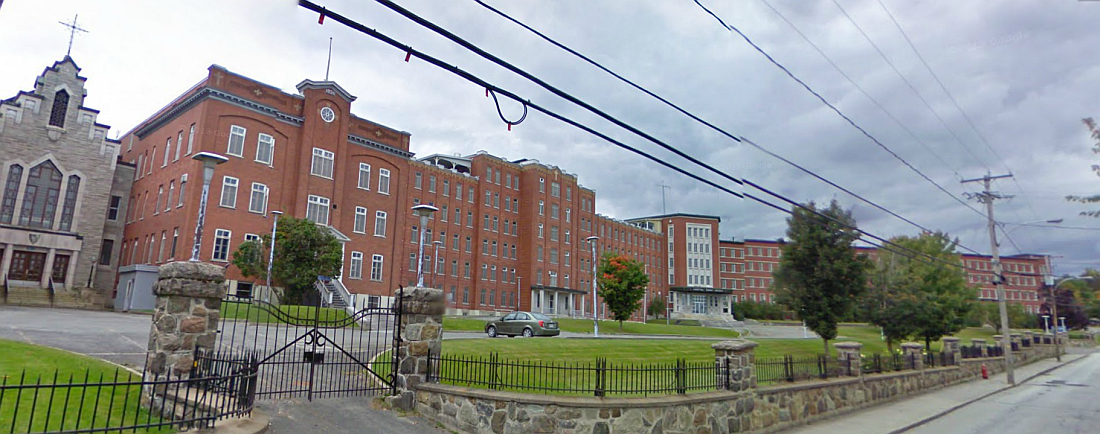
In the early 1950s and 1960s, orphaned children were falsely labeled as mentally retarded, and therefore were placed inside mental institutions. One of them was the Saint-Julien Hospital in Quebec.
The Duplessis Orphan Scandal implied that Quebec’s Prime Minister, Maurice Duplessis, conspired with figures in the Roman Catholic Church to have orphans transferred to the facility for him to receive more federal funding.
The children in the institute suffered sexual and physical abuse, and many children were also experimented on.
In 2012, the hospital was demolished.
Rockwood Asylum (Ontario, Canada)
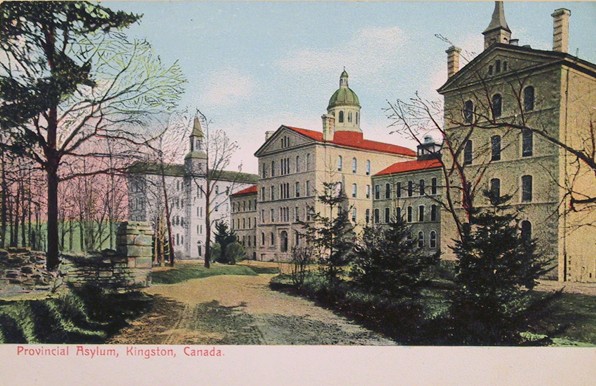
Rockwood Asylum was commissioned by Upper Canada Premier Sir John A. Macdonald in order to house the criminally insane of Kingston Penitentiary in Ontario.
Construction of the facility began in 1859 and when it was completed, it was house to 300 patients. Patients had to wear canvas uniforms with the word “lunatic” on them, with alcohol and sedatives used to keep patients under control.
It was also reported some of the first neuro-surgical lobotomies were performed on patients in this asylum.
In 2000, Rockwood Asylum closed and is now standing abandoned and empty, except perhaps for the ghosts who lurk in the halls.
The London Asylum for the Insane (London, Ontario, Canada)
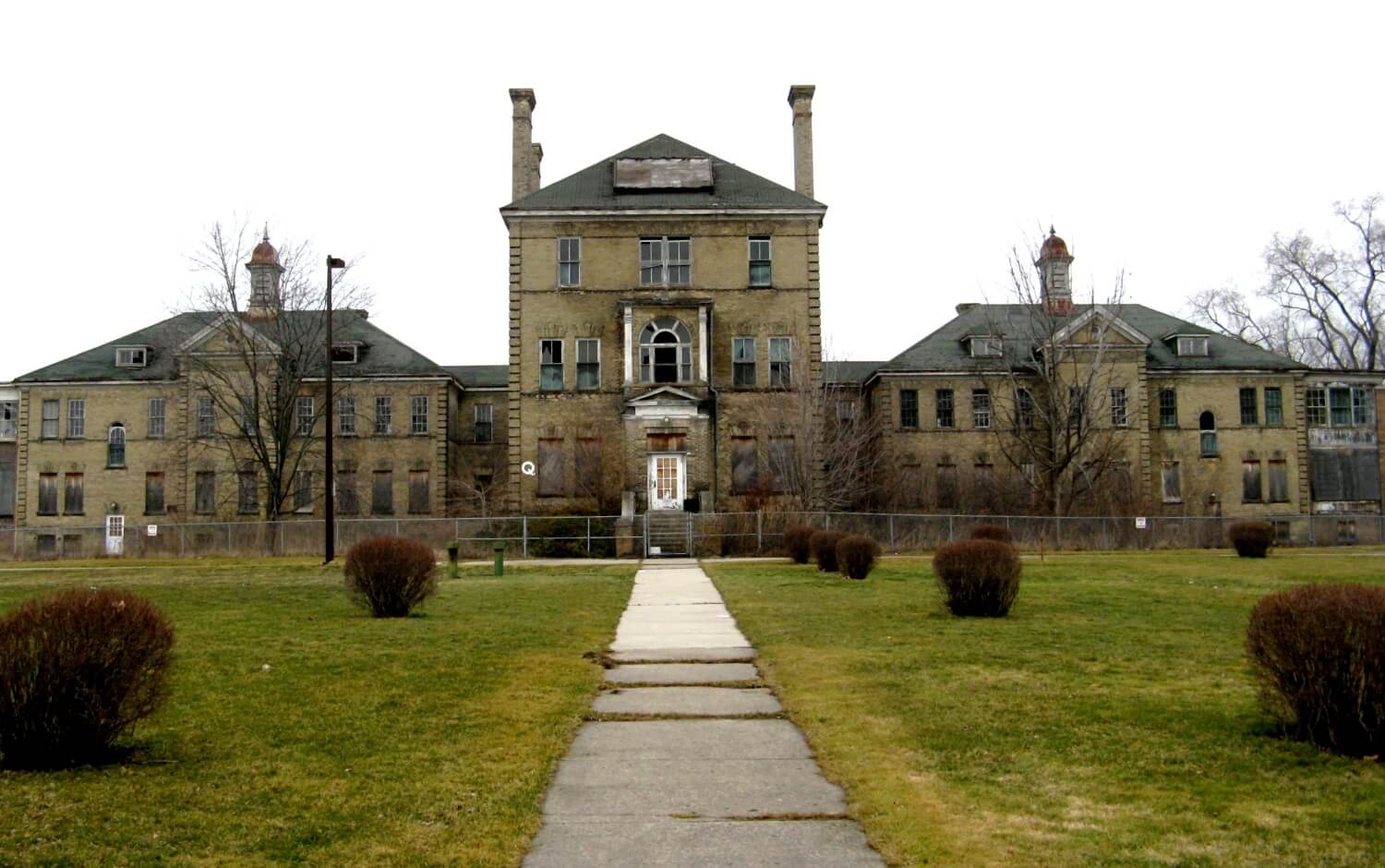
The London Asylum for the Insane opened in November 1870 just outside the city of London, Ontario.
Dr. Maurice Bucke, who was the superintendent of the institute between the years 1877-1902, believed too that insanity was related to ills of the body, and in order to cure the patients, he too performed horrifying treatments on them.
Bucke thought that problems with reproductive organs caused hysteria in women, and so, decided to perform regular hysterectomies. He also believed that masturbation caused insanity, and therefore male patients were subjected to physical discipline and mechanical restraints in order to control their tendencies.
In 2014, The asylum shut down for good.
Bellevue Hospital (New York, USA)
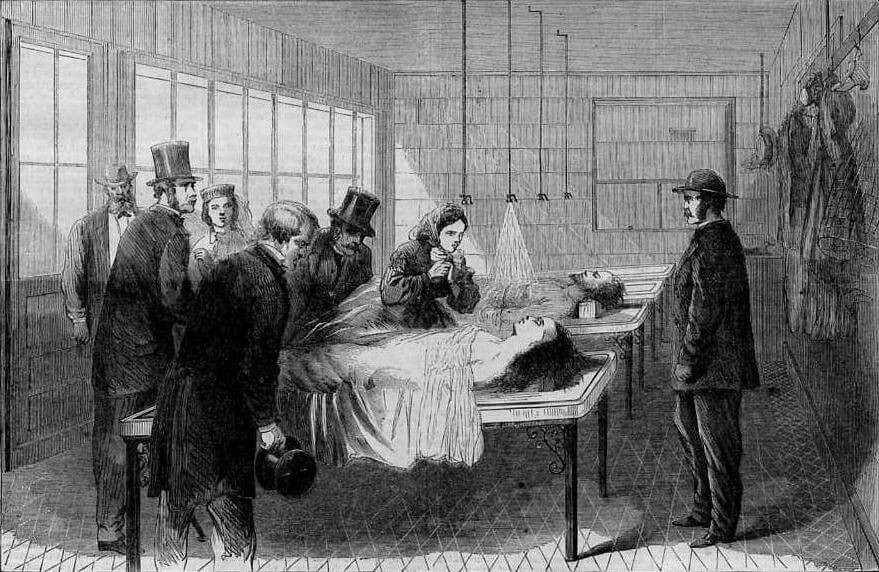
Bellevue Hospital was founded in 1736, and was America’s oldest public hospital, a refuge for New York’s undesirables.
In 1931, a psychiatric facility was built and added, and had become an inspiration to many horror movies, comic books and nightmares.
The psychiatric facility became associated with disturbing psychiatric practices, among them were insulin shock therapy (New York’s version of London’s Bethlem).
The hospital closed its gates in 1984, and today it is partially used as a homeless shelter, but most of the times, the building is empty and abandoned.
The Provinical Lunatic Asylum (New Brunswick, Canada)
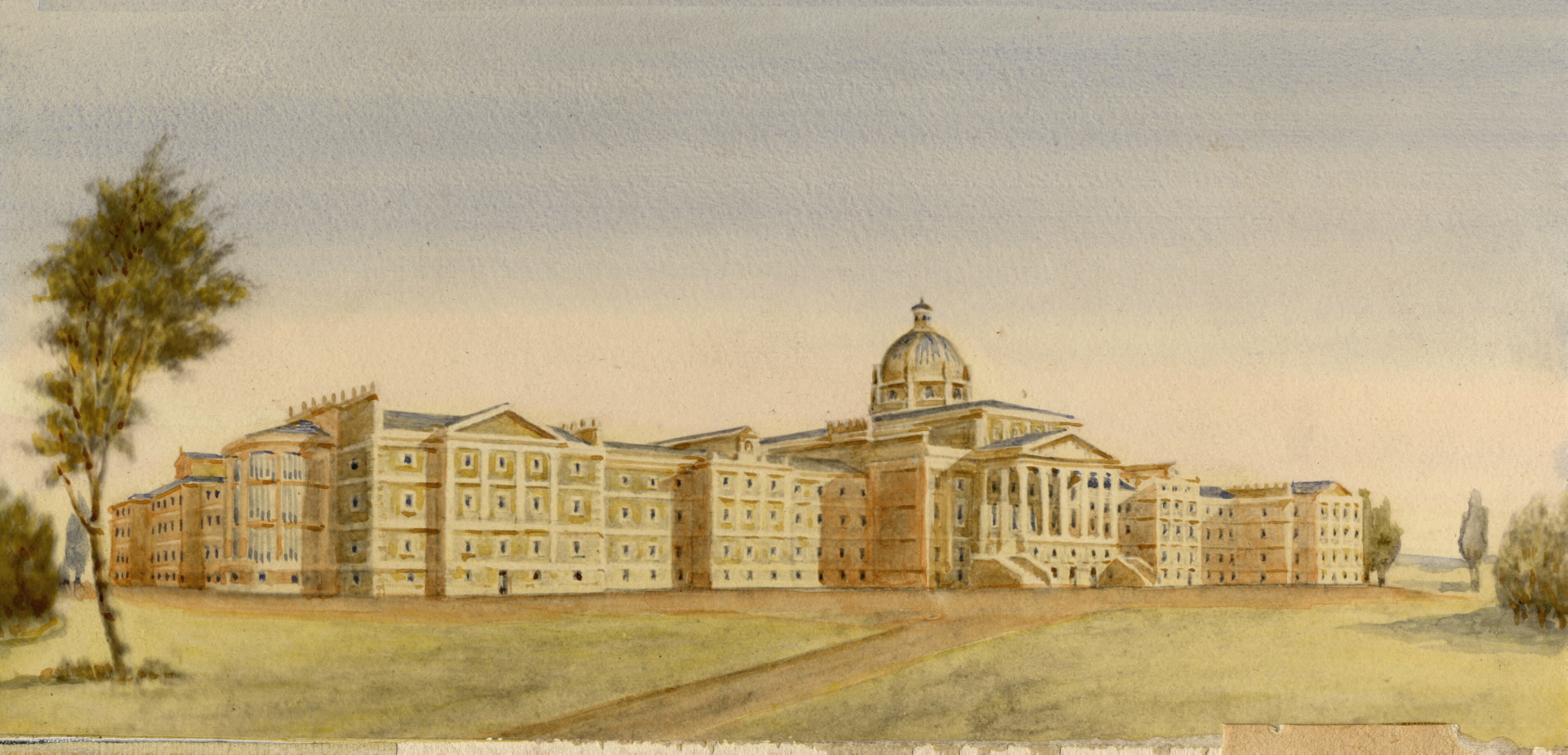
Centracare, that was once known as the Provinical Lunatic Asylum, was built in 1848, on the bluff overlooking the St. John River in New Brunswick.
Even though practices in the institute did not include harsh treatments, patients at the asylum were still subjected to isolation, hot and cold baths, and restraints.
The asylum was demolished in 1999, and it is now a privately-owned park, leaving behind a legacy of a haunted place. There have even been reports of disembodied voices, sounds of babies crying, and a cold mist hanging over the area.
Buffalo State Asylum (New York, USA)
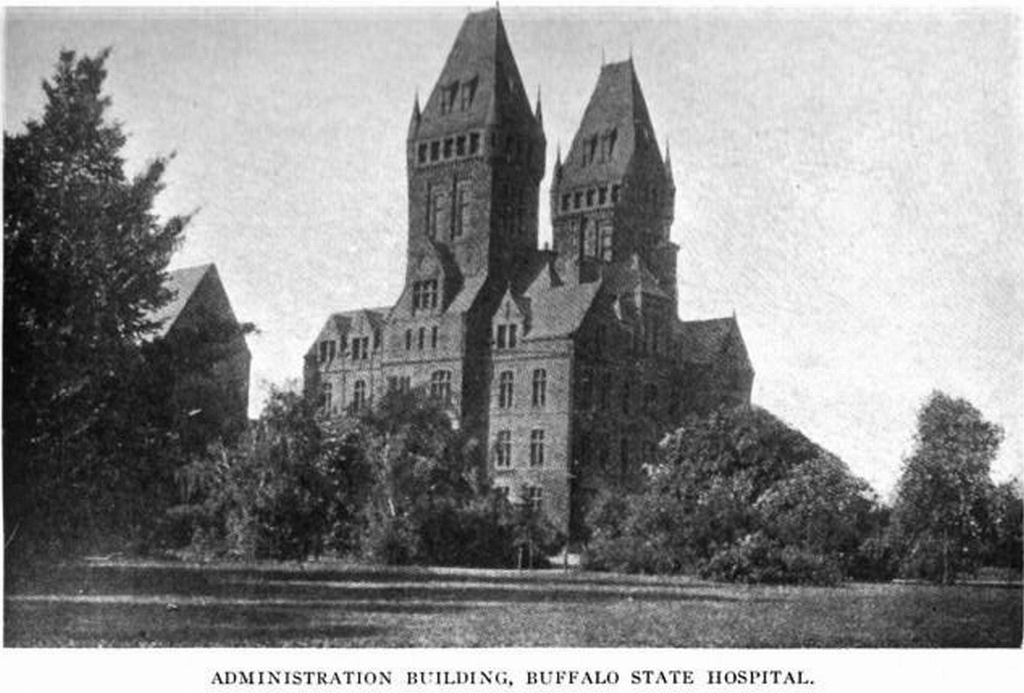
In 1880, The Buffalo State Asylum opened its gates and it was not a nice place to be in, to say the least.
Treatment in the asylum included of horrifying experiments, as heads of patients were cut open regularly in order to isolate sections of their brains, doctors used electro-shock therapy, and wards were placed in tubs of water for extended amounts of time.
People often report sounds of horrific screams coming from the end wing of each room, but nothing has ever been discovered.
Ospedale Psichiatrico di Volterra (Tuscany, Italy)
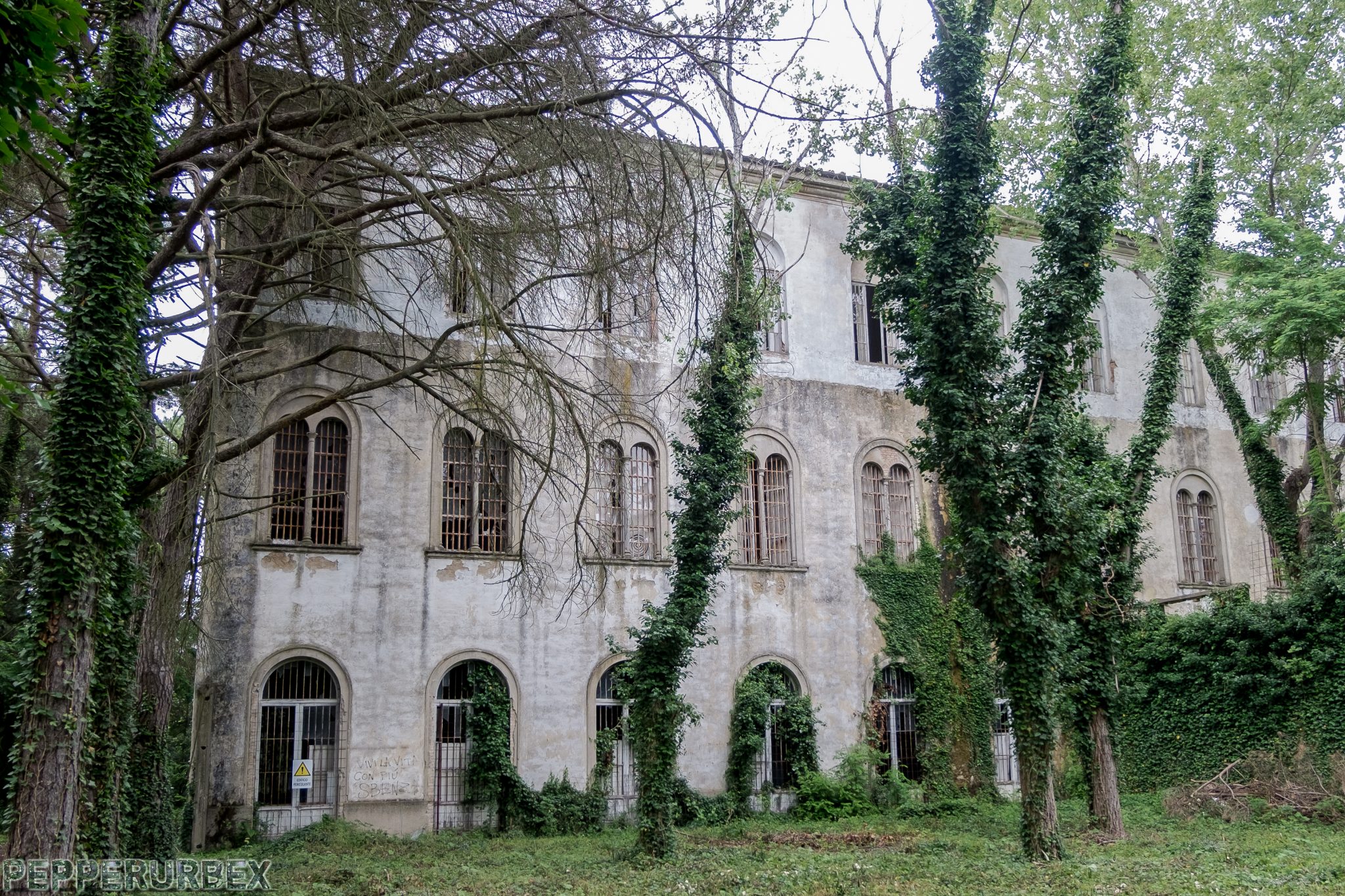
Ospedale Psichiatrico di Volterra was a psychiatric hospital located in Tuscany, Italy and was home to more than 6,000 patients who were sent to the hospital for treatment.
The place was also known as the “place of no return” because patients were supposedly not allowed to leave the premises. The windows had bars on them and the doors contained spy holes, which suggested that the patients were under constant supervision.
Patients were also tied to their beds in strait-jackets, and letters from family were hidden from them.
The place shut down in 1978 after it was shown that practices at the asylum were too cruel to handle.
Hamilton Insane Asylum (Hamilton, Ontari, Canada)
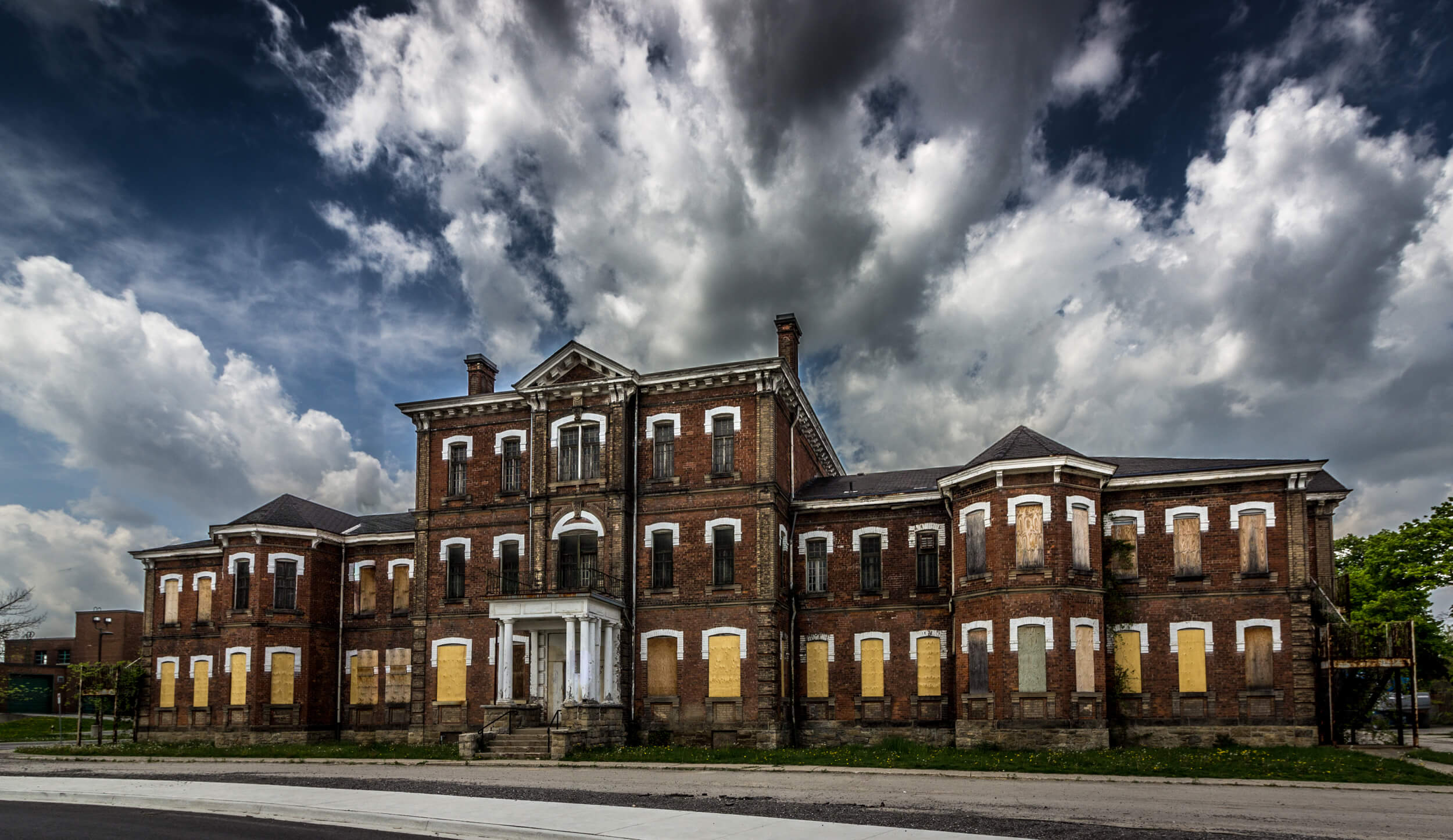
For more than a century, the Hamilton Insane Asylum was an unsettling landmark atop a hill.
Residents would be warned not to end up in the mansion on the hill, and people knew what they were talking about, as treatments in the institute included salt rub simulation, morphine injections, and alcohol.
During the 1980s, the asylum, which is known today as “Century Manor,” became a museum, however, it is closed and the building it seems is no longer in use.
Weyburn mental hospital (Weyburn, Saskatchewan, Canada)
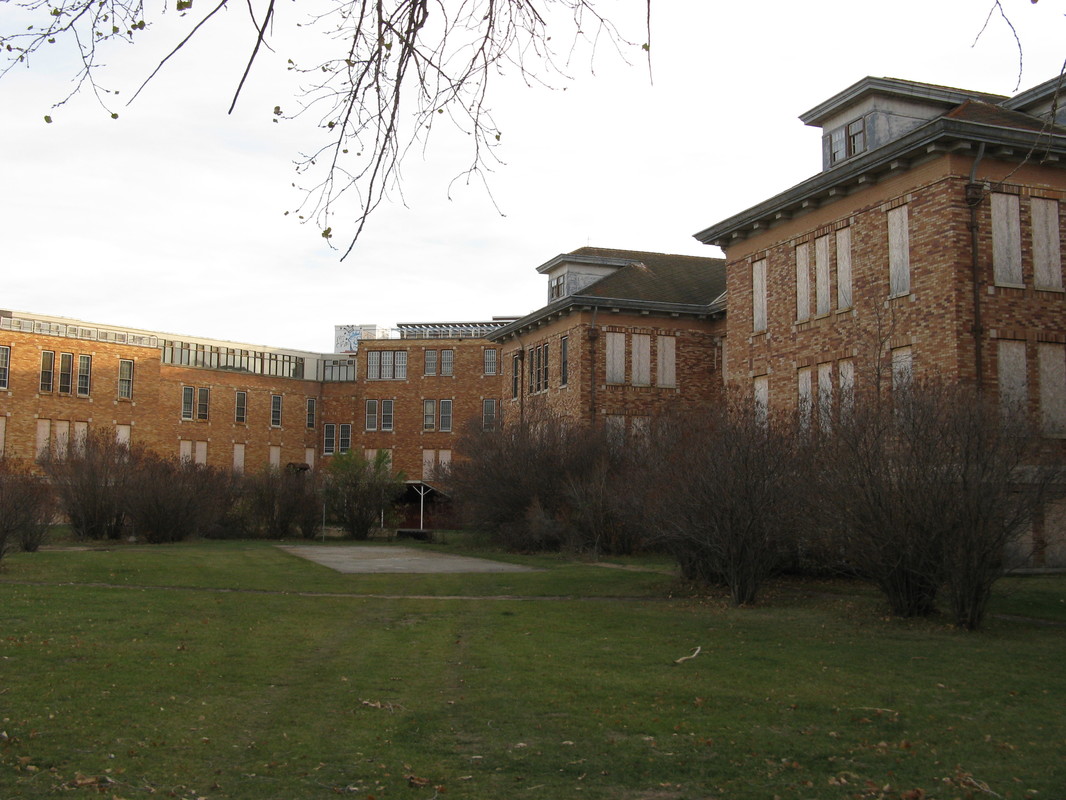
Opened in 1921, The Weyburn mental hospital quickly became one of Canada’s most notorious psychiatric institutions.
Among the treatments and practices performed in the hospital were lobotomies, as well as LSD experiments. Dr. Humphrey Osmond coined the term “psychedelic,” and was among the first that used LSD in psychiatric experiments.
The institute shut down in 1971, and eventually, the building was demolished in 2009.
Poveglia Island (Italy)

Poveglia Island in Italy is believed to be the world’s most haunted island.
During Roman times, it was used to isolate plague victims, and legend has it that 160,000 people died there. In 1922, a mental hospital was built on the island, with a large bell tower.
Patients reported seeing the ghosts of plague victims on the island, and were kept up at night hearing their wails. One of the doctors in the institute performed brutal experiments on his patients, and others were taken to the bell tower to be tortured.
Legend has it that the doctor began to hear the victims’ ghosts himself, and became insane, throwing himself from the top of the bell tower.
The tower was removed years ago, but people claim that they still hear the chimes.
Bethlem Royal Hospital (London, England)
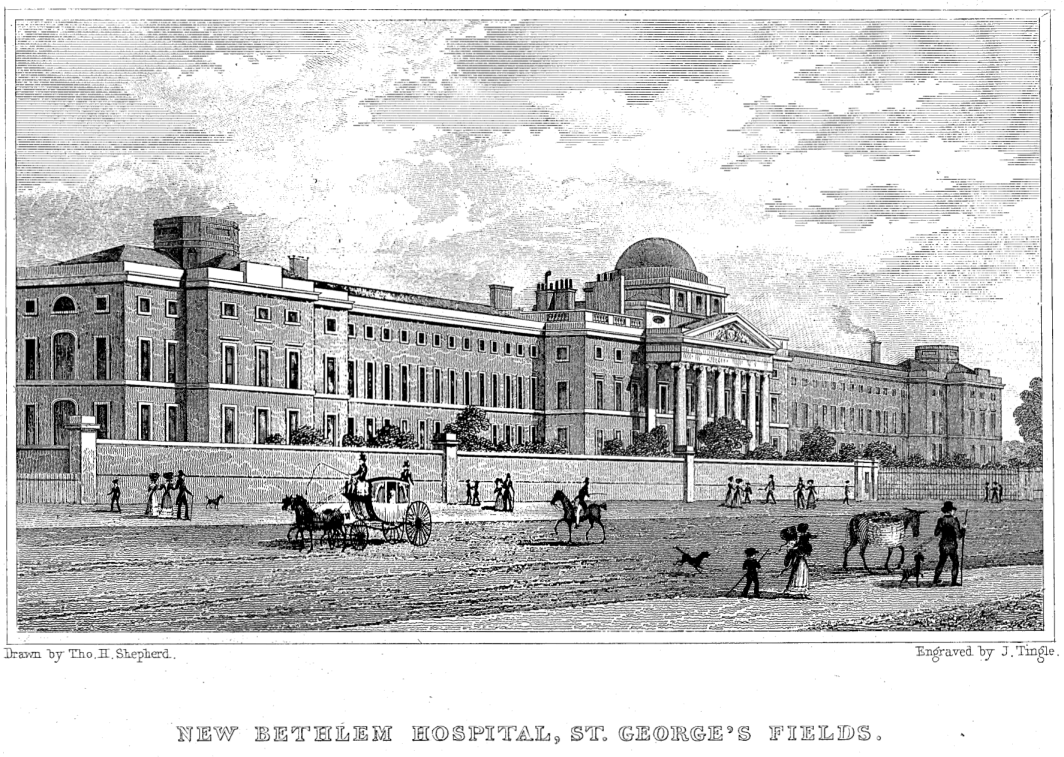
Bethlem Royal Hospital located in London is widely considered as one of the worst lunatic asylums in the world.
Built in 1247, the hospital is Europe’s oldest mental health facility. In 1675, problems arose when the facility was overflowing with patients afflicted with everything from learning disabilities to schizophrenia.
Many treatments were agonizing and some patients did not survive them, with mass graves being found on the property. One of the most controversial treatments was rotational therapy, which meant spinning a patient in a chair repeatedly.
Things are different these days as knowledge is wider, the staff is a lot more professional and all hospitals and institutes are being inspected regularly. Still, there can always be acts and practices we may not know about, but hopefully everything is going well and legally.
If you have more things and experiences to share with us, please comment below and let’s talk about them, and if you’ve sensed different presence nearby or have seen ghosts of past times, you must share with us!



